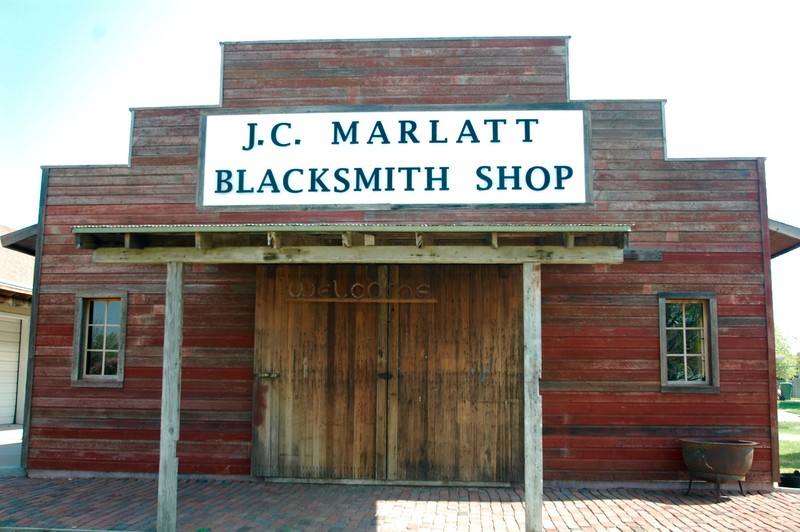J.C. Marlatt Blacksmith Shop at the Trails and Rails Museum
Introduction
Text-to-speech Audio
Although the J.C. Marlatt Blacksmith Shop was built in 2012, it was built using lumber from barns in the area that were built in the late 1800s and early 1900s. Inside is a fully functioning Blacksmith shop with a permanent forge and chimney on the west side as well as several tools used to help shape the hot metal. The shop is currently used by a group of Blacksmiths in Kearney; they get together once a month to work on their projects. When you visit the Blacksmith shop, be sure to ask your guide what the Blacksmith’s water will cure!
Images
The front of the Blacksmith shop.

Backstory and Context
Text-to-speech Audio
Blacksmiths have been around since ancient
times, forming iron, and sometimes steel, into useable objects. Blacksmiths use
a forge to heat a portion of the metal object they are working with; until the
metal is so hot it glows red or orange.
An anvil is often used to help shape the hot metal, as it has a flat top
surface, a curved, pointed side that can be used to bend the hot metal, and
often holes that are used in combination with other tools to form holes in the
hot metal. Although the anvil and hammer are the main tools used in shaping, other, smaller
metal tools may also be used in combination with them such as nail-like objects
and chisels.
Blacksmiths forged everything that was made out of iron before machines were created to do the work. They made door handles, nails, and tools, they even made the hammers used to make other objects! Blacksmiths also formed the iron for horseshoes to fit to a horse’s hoof. This was a frequent use of the Blacksmith’s abilities in the American West as horses were one of the primary sources of transportation.
Blacksmiths forged everything that was made out of iron before machines were created to do the work. They made door handles, nails, and tools, they even made the hammers used to make other objects! Blacksmiths also formed the iron for horseshoes to fit to a horse’s hoof. This was a frequent use of the Blacksmith’s abilities in the American West as horses were one of the primary sources of transportation.
Sources
Ron Hardman, 2016,
“Blacksmithing: Hand-Crafted Metal Work for a New Generation,” Molly Green Magazine, Summer, 73.
